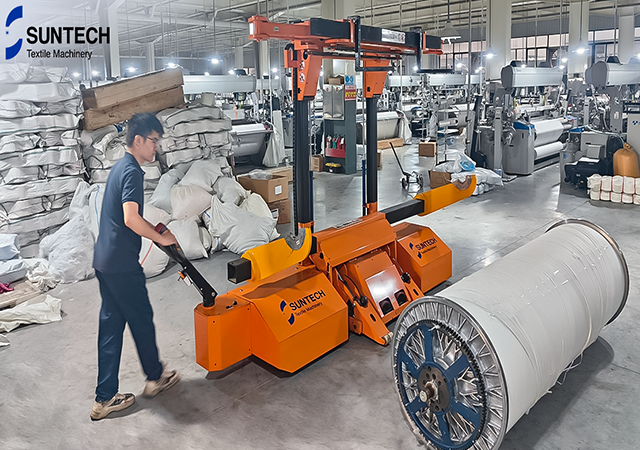Competitiveness and operational efficiency are crucial elements for success in the textile manufacturing industry. A technological advancement that has garnered attention among manufacturers is the automated beam handling system. This article will delve into the financial advantages of adopting such textile machinery, with a focus on cost savings, increased production capacity, and minimized downtime.
Cost Savings Through Automation
The implementation of motorized beam trolley results in a substantial reduction in labor costs. Traditionally, manual labor is involved in lifting and transporting heavy beams, necessitating the efforts of multiple workers. With the introduction of motorized beam trolleys, this labor-intensive task becomes mechanized, diminishing the need for manual handling. Consequently, manufacturers can redirect their workforce towards more value-added tasks, such as quality control or machine operation.
Furthermore, the risk of work-related injuries associated with manual lifting and transportation is significantly mitigated. This reduction not only leads to cost savings but also enhances employee morale and productivity by minimizing workplace accidents and associated compensation claims.
Enhanced Production Capacity
Motorized beam trolleys empower textile manufacturers to augment their production capacity and meet escalating customer demands. The transition from manual handling to motorized beam trolley significantly reduces the time required to load and unload beams. This efficiency improvement translates to shorter changeover times between production runs, resulting in increased uptime and enhanced throughput.
Moreover, motorized beam trolleys provide precise positioning and alignment capabilities, ensuring consistent and accurate placement of beams. This minimizes errors during the production process, resulting in improved product quality and fewer defects. Manufacturers can thereby deliver higher-quality textiles, strengthening their reputation and potentially attracting new business opportunities.

Minimized Downtime
Downtime in textile manufacturing can significantly impact overall productivity and profitability. Manual handling of beams often leads to delays due to errors, equipment breakdowns, or the need for additional labor. In contrast, motorized beam trolleys streamline and optimize the beam handling process, minimizing downtime.
Equipped with advanced features such as remote control and sensor-based technology, these systems enable operators to navigate through the manufacturing facility with ease, avoiding obstacles and optimizing workflow. Some models offer real-time monitoring and diagnostic capabilities, allowing for proactive maintenance and troubleshooting, further minimizing unplanned downtime.
Calculating the Return on Investment
To assess the return on investment (ROI) of implementing motorized beam trolley, manufacturers need to consider various factors. The initial investment cost, including the systems, installation, and any necessary infrastructure modifications, should be weighed against anticipated financial benefits.
Labor cost savings can be calculated by estimating the reduction in man-hours required for beam handling and multiplying it by the labor cost per hour. Increased production capacity can be quantified by analyzing historical changeover times and calculating the additional production runs made possible by reduced changeover times. Reduced downtime can be evaluated by comparing historical downtime records before and after the implementation of automated systems.
In Conclusion
Motorized beam trolley offers textile manufacturers a spectrum of financial benefits, including cost savings, increased production capacity, and minimized downtime. By automating the beam handling process, manufacturers can optimize their workforce, enhance overall efficiency, and deliver higher-quality textiles to their customers. To accurately gauge the ROI of adopting these systems, it is crucial to consider factors such as labor cost savings, increased production capacity, and reduced downtime. Through a comprehensive analysis, textile manufacturers can make informed decisions and maximize their return on investment in these innovative technologies.




